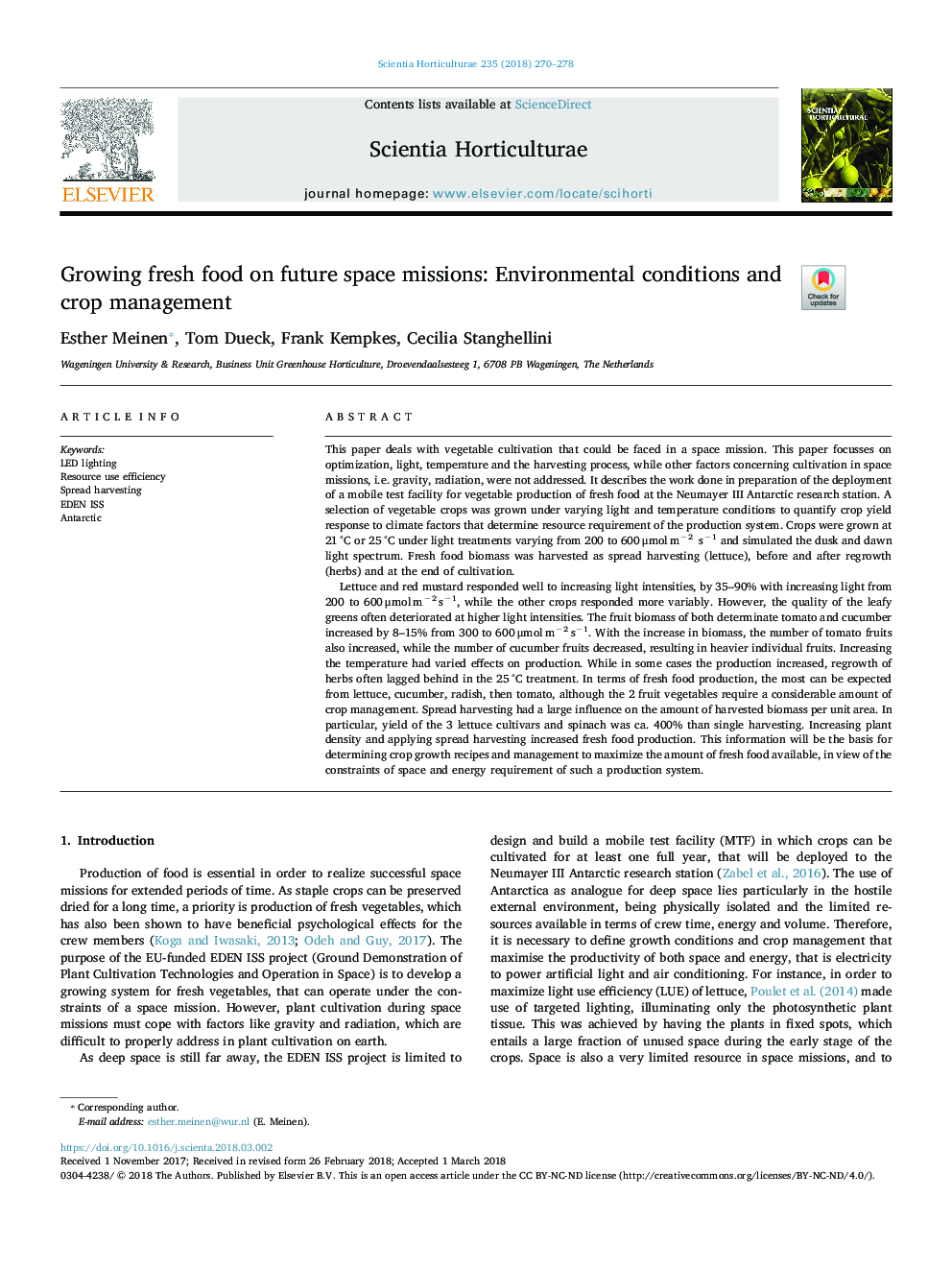| کد مقاله | کد نشریه | سال انتشار | مقاله انگلیسی | نسخه تمام متن |
|---|---|---|---|---|
| 8892701 | 1628763 | 2018 | 9 صفحه PDF | دانلود رایگان |
عنوان انگلیسی مقاله ISI
Growing fresh food on future space missions: Environmental conditions and crop management
ترجمه فارسی عنوان
رشد مواد غذایی تازه در ماموریت های فضایی آینده: شرایط محیطی و مدیریت
دانلود مقاله + سفارش ترجمه
دانلود مقاله ISI انگلیسی
رایگان برای ایرانیان
کلمات کلیدی
موضوعات مرتبط
علوم زیستی و بیوفناوری
علوم کشاورزی و بیولوژیک
دانش باغداری
چکیده انگلیسی
Lettuce and red mustard responded well to increasing light intensities, by 35-90% with increasing light from 200 to 600â¯Î¼molâ¯mâ2â¯sâ1, while the other crops responded more variably. However, the quality of the leafy greens often deteriorated at higher light intensities. The fruit biomass of both determinate tomato and cucumber increased by 8-15% from 300 to 600â¯Î¼molâ¯mâ2â¯sâ1. With the increase in biomass, the number of tomato fruits also increased, while the number of cucumber fruits decreased, resulting in heavier individual fruits. Increasing the temperature had varied effects on production. While in some cases the production increased, regrowth of herbs often lagged behind in the 25â¯Â°C treatment. In terms of fresh food production, the most can be expected from lettuce, cucumber, radish, then tomato, although the 2 fruit vegetables require a considerable amount of crop management. Spread harvesting had a large influence on the amount of harvested biomass per unit area. In particular, yield of the 3 lettuce cultivars and spinach was ca. 400% than single harvesting. Increasing plant density and applying spread harvesting increased fresh food production. This information will be the basis for determining crop growth recipes and management to maximize the amount of fresh food available, in view of the constraints of space and energy requirement of such a production system.
ناشر
Database: Elsevier - ScienceDirect (ساینس دایرکت)
Journal: Scientia Horticulturae - Volume 235, 17 May 2018, Pages 270-278
Journal: Scientia Horticulturae - Volume 235, 17 May 2018, Pages 270-278
نویسندگان
Esther Meinen, Tom Dueck, Frank Kempkes, Cecilia Stanghellini,
